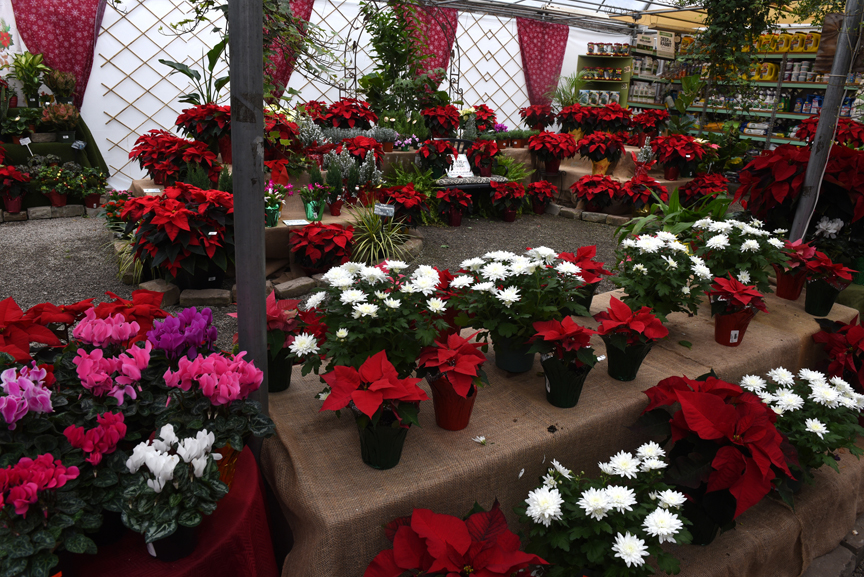11 best Christmas plants: Unique and traditional varieties for the holidays
Posted on: December 5, 2019 | Written By: Doug Oster |
There was a time when poinsettias, paperwhites and amaryllis were the only three traditional plants being offered for the holidays. The details of growing and enjoying those plants are covered below, but there are some other interesting things to grow indoors for this festive season. There’s nothing wrong with the big three, but it’s fun to stretch. (And if you’re searching for a unique hostess gift, look no further.) Check out this list of the 11 best Christmas plants.
Dwarf Alberta spruce
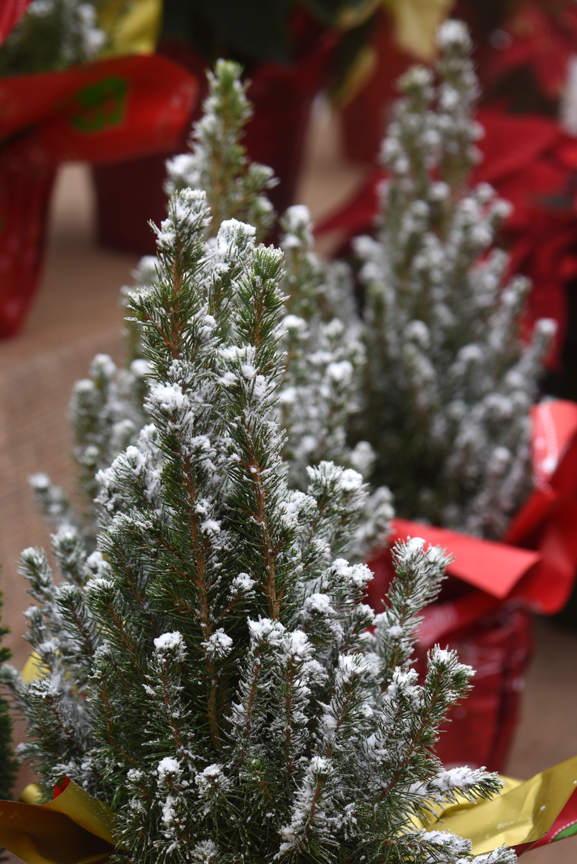
Dwarf Alberta spruce are often covered in a faux snow.
A dwarf Alberta spruce is basically a small Christmas tree. They are often sprayed with faux white snow. The tree could even be decorated with lights and ornaments. In garden centers and nurseries, they are only about 18 inches tall and could actually be planted outdoors after the holiday if the ground isn’t frozen. The plant would also limp along on the windowsill and then could be added to the landscape in the spring.
Gaultheria

Gaultheria or wintergreen is a unique holiday plant.
Gaultheria is also known as wintergreen. It’s a hardy groundcover that is covered in red berries. The plant is sold in small pots for indoor holiday display and can also be an outdoor plant after the season.
Lavender and rosemary
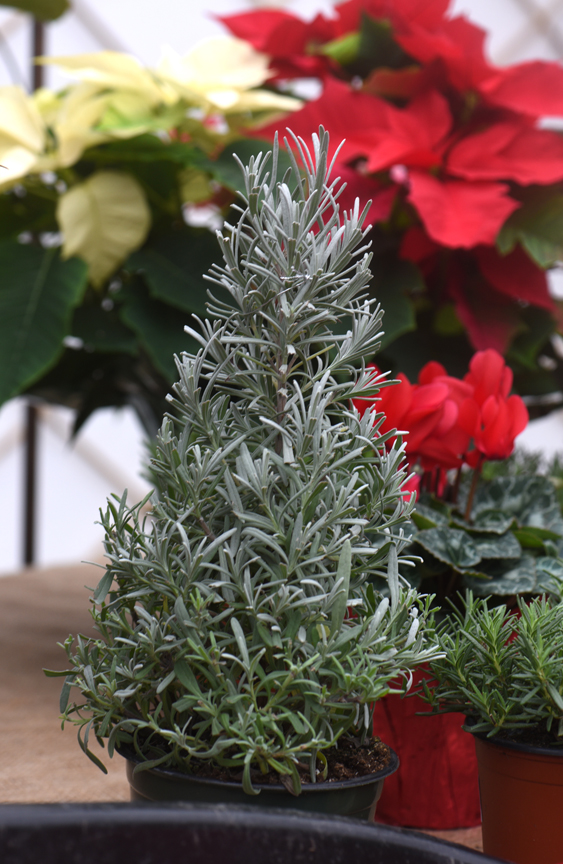
Lavender or rosemary can be pruned to look like a Christmas tree.
Many places offer lavender or rosemary plants pruned into a Christmas tree shape. Both need a little TLC to get them through the winter. The lavender should be kept on the dry side. The rosemary needs moist soil, but don’t overdo it; too much water will kill the plant. Both can be harvested through the winter while growing next to a bright window and then planted outdoors when temperatures warm up.
Kalanchoe
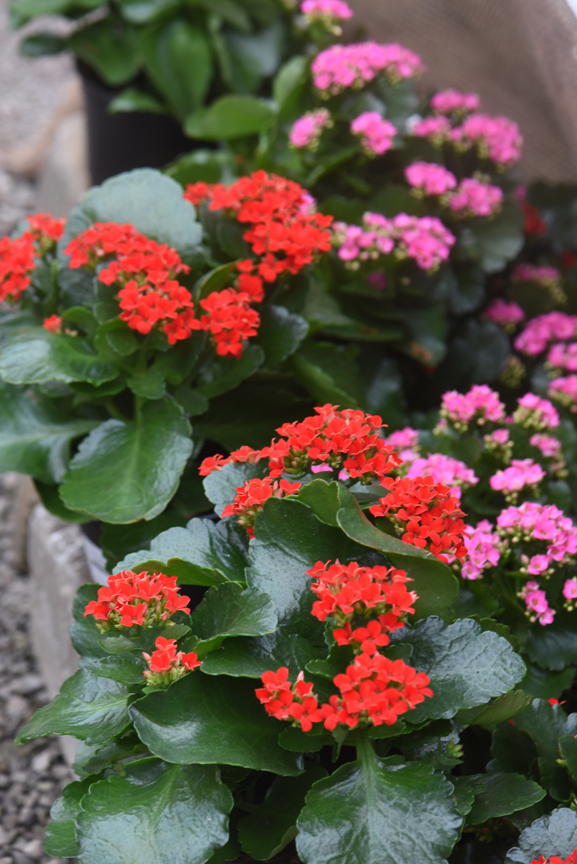
Kalanchoe is a succulent which will happily grow on the windowsill all winter.
Kalanchoe comes in red, white and other colors. It’s a tough succulent that can last for years on the windowsill and will bloom again when happy. The only thing that can kill it is kindness — too much water or fertilizer is a big problem for the plant. None of these windowsill plants should be fertilized until early March when the days are long enough for the plant to use the extra nutrients.
Cyclamen
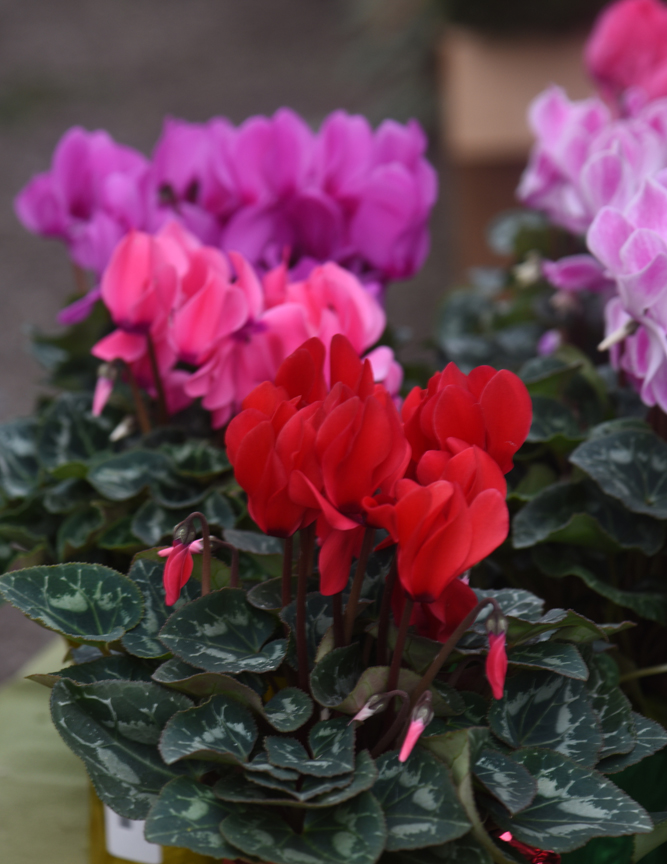
Cyclamen go dormant at some point, but can be brought back after a couple of months.
A colorful cyclamen plant needs special care and shouldn’t ever dry out. As long as the soil stays moist, the plant will thrive for most of the winter. Eventually it will go into dormancy, fooling lots of gardeners into throwing the plant to the compost. When it starts to lose leaves, stop watering, remove the dead leaves and put the pot in a cool dark place for a couple of months. Bring it back out and start watering, and the cyclamen will reemerge.
Christmas cactus

Christmas cactus will bloom year after year.
Although a Christmas cactus is not really a cactus, it’s another plant the prefers to be watered lightly. Some years they’ll bloom again during the holiday, but other years they will become Thanksgiving or Easter cactus. Very easy to grow and a long lived indoor plant.
Variegated jade
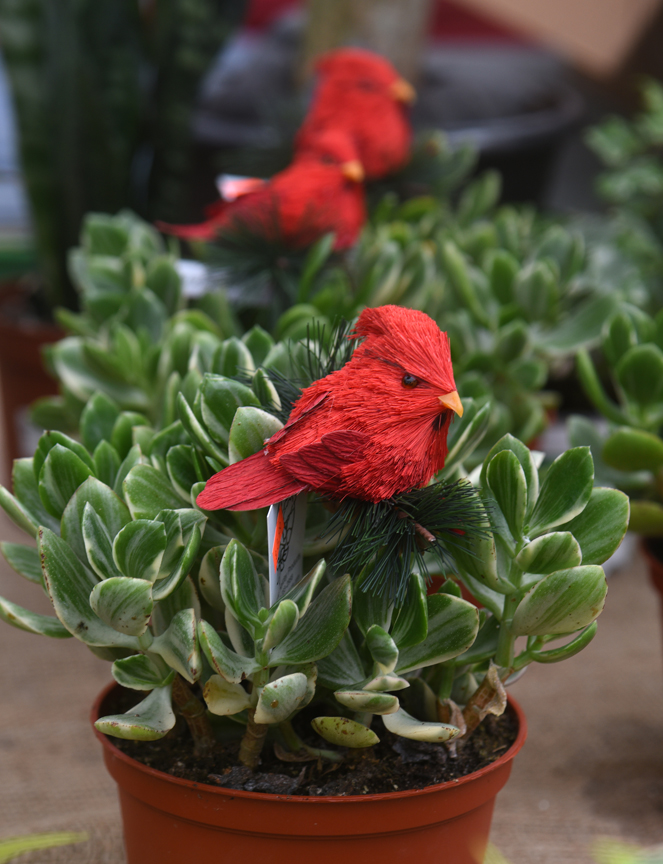
A variegated jade plant with an ornament makes a great holiday plant.
If you want something indestructible, try a variegated jade plant. Like the kalanchoe, it can only be killed by too much water. This plant has no colorful connection to the holidays so just put a pretty decoration on the foliage and you’ll be remembered for years to come as the plant thrives indoors.
Poinsettia
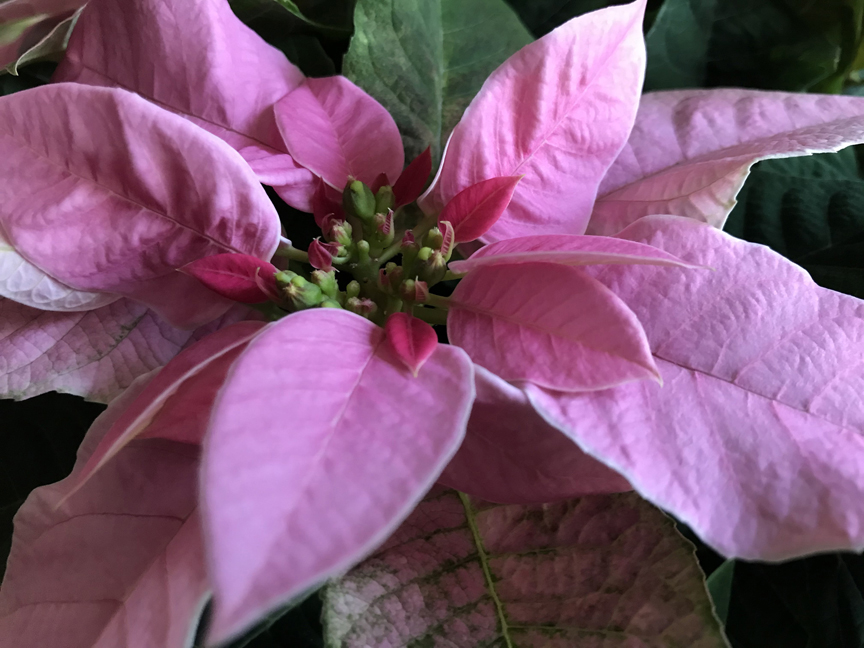
‘Princettia’ is a hybrid poinsettia that grows well indoors on the windowsill. This one has pretty pink bracts.
Poinsettias have come a long way over the years in regards to colors and varieties. The key to their survival, like most plants, is water and light. It’s a fun challenge to keep poinsettias going after the season has passed. Once the plant is brought home, remove the foil or poke holes in the bottom so the pot can drain. Put a small dish or plant caddy under the pot to catch excess water. Keep the soil moist, but not dripping. Pour out the extra water from the dish, so the soil has a chance to dry out. Poinsettias prefer dryer soil and will perish if overwatered. A windowsill will give the poinsettia enough light to live through the winter.
The most popular color is red, followed by creamy white, but there are lots of other options.
‘Princettia’ poinsettia was introduced several years ago as a bedding plant for outdoor gardening, but it didn’t catch on for that use. It’s become all the rage as a holiday plant. It’s the only variety that is pure white, but it comes in pinks and reds too. Of all the poinsettias, this one might be the best for extended indoor growing. ‘Princettia’ has a compact growth habit with deep green foliage that is covered by the colorful bracts. The actual flowers are the bead-like growth in the center of each bract. Technically poinsettias are toxic, but the milky white sap tastes awful and no child or animal would dare take more than a bite or two.
Paperwhites
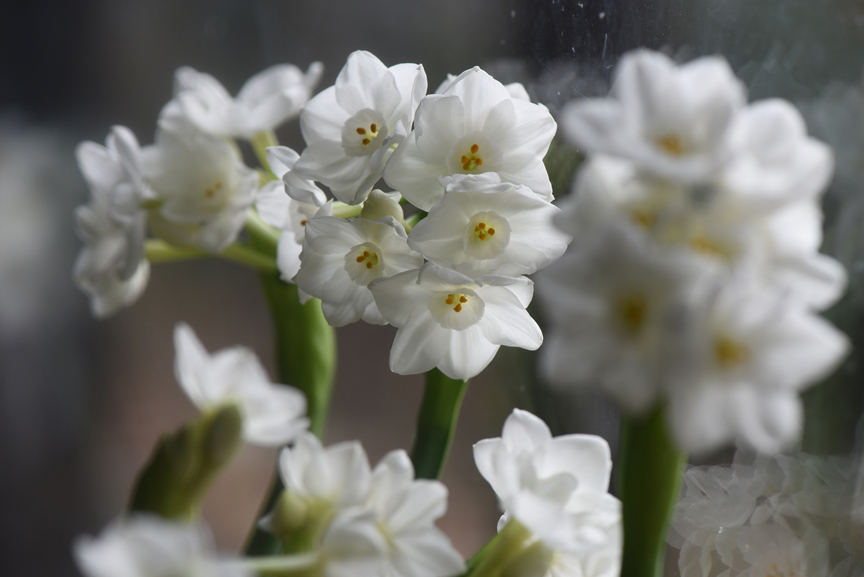
There’s lots of things to do over the winter for gardeners. Paperwhites are often grown during the holidays, but will brighten the house any time of the year.
Paperwhites are the most controversial of all holiday plants. When these tender white daffodils bloom, the flowers release a strong aroma that is loved by some and hated by others. Just a few flowers will fill a room with “magical” fragrance. They are also one of the easiest plants to grow. The bulbs can be planted in soil or allowed to root in water. After the blooms have faded, the plants can be discarded into the compost pile as they are not hardy and are stubborn re-bloomers.
Amaryllis
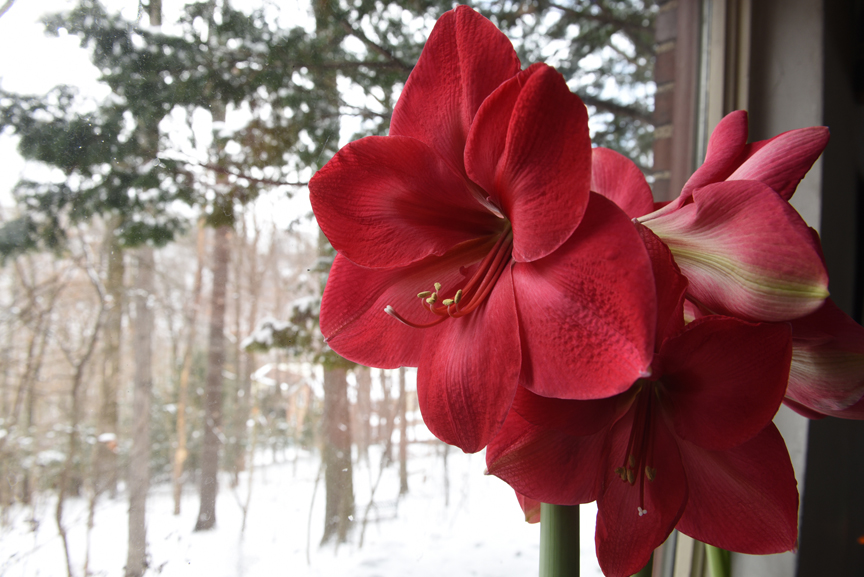
Amaryllis blooms help gardeners get through the winter.
The winter blooms of huge amaryllis flowers make the season pass a little faster. The large bulbs have everything they need to produce flowers. Bigger bulbs usually produce more flowers, so buy the largest that can be found. They are best grown in a planting mix. Only the bottom quarter of the bulb should go in the mix, in a container with drainage. Keep the soil moist, but not wet enough to rot the bulb. The flower stalk will appear first and then bloom. Hopefully the bulb will send up more buds.
Once the plant is done blooming, remove the flower stalk, but not the foliage of the plant. Those leaves will give the bulb energy and when the plant is treated right, it will continue to bloom annually. The bulb needs to go through a certain growth cycle to continue those yearly blooms. Grow the amaryllis as a houseplant for the winter. Take the plant outdoor when all chance of frost has passed and grow it in a shady area, fertilizing monthly. As summer wanes, bring the pot back indoors, stop watering and fertilizing. Eventually the strapping foliage will turn brown and whither. Keep the plant in a cool dark place for at least six weeks. Often times the plant will tell you when it’s coming out of dormancy by poking a bud up out of the planting mix. If that doesn’t happen, put the pot in the windowsill and add a little water. Hopefully a bud will appear. If it’s just the foliage, then you’ll have to wait another year for the bulb to store enough energy to bloom again following the same procedure.
These plants will bring joy to the home, provide a little fresh air and keep gardeners sane for the winter.
Doug Oster is editor of Everybody Gardens, a website operated by 535Media, LLC. Reach him at 412-965-3278 or doster@535mediallc.com. See other stories, videos, blogs, tips and more at everybodygardens.com.
More from Everybody Gardens
Giving thanks for the wonders of the garden.
